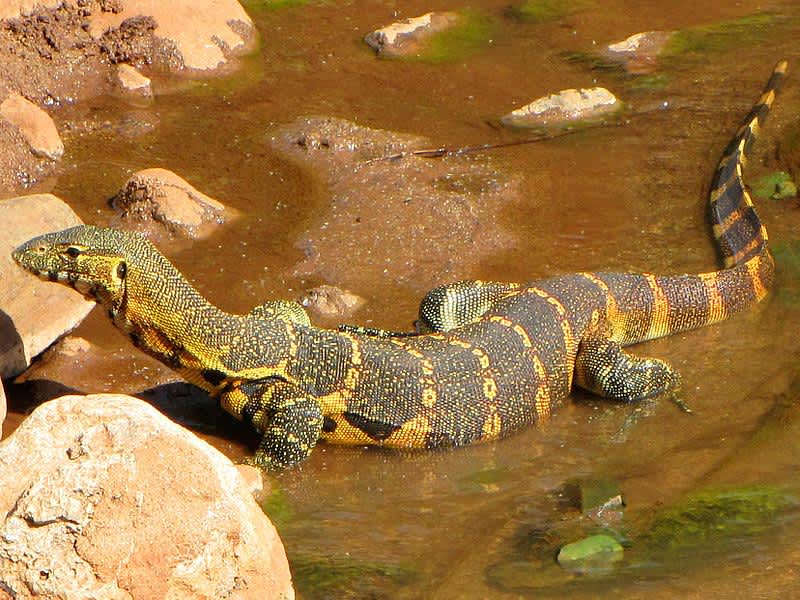Cat-eating Monitor Lizards Invade Florida, Officials Ask Public for Help
OutdoorHub Reporters 04.15.15

They are large, they are hungry, and they have been in Florida since at least the early 1990s. According to the Florida Fish and Wildlife Conservation Commission (FWC), Nile monitor lizards have breeding populations in at least three counties and have been sighted across the state. On warm days, the lizards can be seen basking in the sun along the waterways in Palm Beach County, or even sauntering on beaches. Since surveys of the species started last year, officials have become increasingly worried over what kind of effect the lizard could have on the state. This is especially true since the monitors seem intent on eating just about anything that comes within reach.
“Nile monitors eat a wide variety of food items including small mammals, reptiles, fish, amphibians and more,” said biologist Jenny Ketterlin Eckles in a recent press release. “Because their diet is so varied, we are assessing whether this species may have an impact on Florida’s native wildlife.”
For now, the FWC has listed the Nile monitor as a high environmental concern, and is asking the public photograph and report any monitors they see. The lizards are especially active this time of year for the breeding season, and residents of southern Florida may see some of these critters basking or foraging for food along canal banks. The FWC will capture any Nile monitors they see, but warns residents not to try and catch one themselves.
“They have very sharp claws and sharp teeth. You wouldn’t want to try to catch one in your Florida room or try to handle one,” FWC wildlife biologist Kelly Gestring told WPTV.
Monitors are not inherently aggressive, but will readily defend themselves if needed. In their native range in Africa, Nile monitors have been known to get into fights with large predators such as wild dogs and lions and come out unscathed. The lizards, which can grow up to five feet long, have a notorious reputation as thieves and will often steal prey from right under the noses of other predators. In Florida, however, the monitor lizard has made another name for itself: a cat-eater. Pet disappearances and the discovery of dead feral cats are often blamed on Nile monitors, yet officials cannot confirm whether domestic animals make up a significant part of the animal’s diet.
What is known is that the monitor lizards are having a negative effect on alligators. The crafty lizards have been documented crawling into alligator nests to devour eggs, similar to their habits in Africa with crocodile nests. Interestingly, it seems that the monitors will also prey on other invasive species as well, such as young Burmese pythons.
The FWC believes that the Nile monitor population in Florida is still small enough to eliminate entirely. The agency has since begun hunting for the lizards, and captured at least 20 since 2014.

